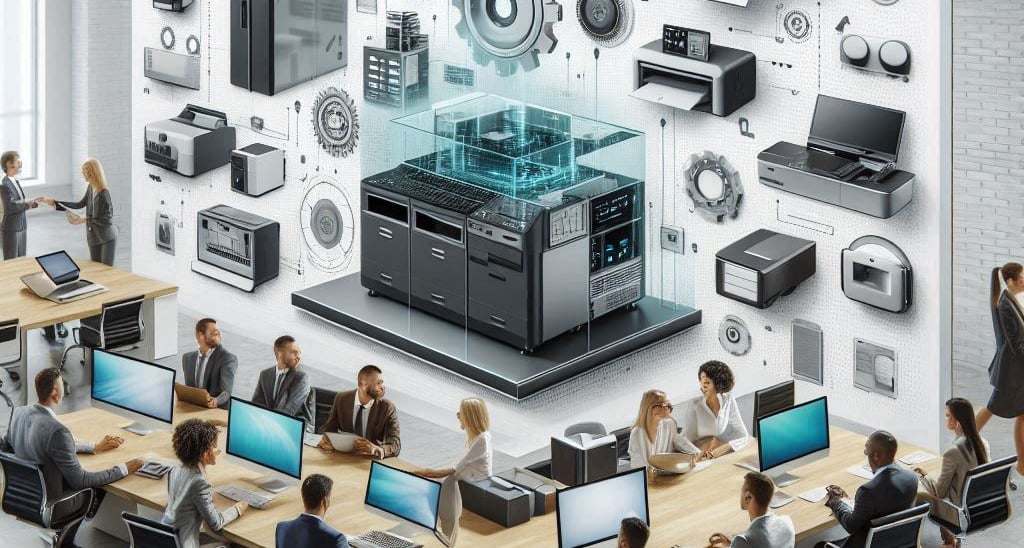Equipment-as-a-Service (EaaS): Transforming Medical Equipment Accessibility
The healthcare industry is rapidly evolving, and with it, the need for sustainable and cost-effective solutions to acquire medical equipment. One of the most innovative financing models in recent years is Equipment-as-a-Service (EaaS). Inspired by the software-as-a-service (SaaS) model, EaaS allows hospitals and healthcare providers to access critical medical devices on a subscription or pay-per-use basis instead of making large capital investments. This ensures continuous upgrades, maintenance, and financial flexibility.
3/29/20252 min read


Understanding Equipment-as-a-Service (EaaS)
EaaS is a model where healthcare facilities lease medical equipment from a provider rather than purchasing it outright. The payment structure is based on a subscription fee or usage, such as paying per scan for an MRI machine. This approach allows hospitals to access cutting-edge medical technology without the high upfront costs, enabling better resource allocation and improved patient care.
Advantages of EaaS in Healthcare
Reduced Capital Expenditure – Hospitals avoid large upfront investments, freeing up capital for other critical healthcare services.
Access to Latest Technology – Continuous upgrades ensure that hospitals use state-of-the-art equipment rather than outdated machines.
Lower Maintenance Burden – Equipment providers handle repairs and maintenance, reducing downtime and costs.
Scalability and Flexibility – Healthcare facilities can scale their equipment needs up or down based on demand, ensuring cost efficiency.
Improved Patient Outcomes – Faster access to high-quality diagnostic tools leads to better disease detection and treatment.
Case Study: Siemens Healthineers’ EaaS Model
Siemens Healthineers is a pioneer in the EaaS model, offering hospitals a way to access advanced imaging equipment without the financial burden of outright ownership.
Key Features:
Hospitals pay per scan or per usage instead of purchasing an MRI or CT scanner.
Siemens manages equipment maintenance, ensuring optimal performance and minimal downtime.
Regular upgrades keep hospitals at the forefront of medical technology.
Impact:
Increased Access: Rural and mid-sized hospitals that previously couldn't afford MRI scanners now have access through EaaS.
Operational Efficiency: Hospitals report reduced maintenance costs and improved cash flow management.
Better Patient Care: With newer machines, hospitals can provide faster, more accurate diagnoses, leading to better treatment outcomes.
Challenges of Implementing EaaS in Healthcare
Regulatory and Compliance Issues – Subscription-based medical device financing must comply with varying regulations across different countries.
Data Security and Privacy – As EaaS models often involve cloud-based services, hospitals must ensure compliance with data protection laws such as HIPAA and GDPR.
Cost Predictability Concerns – While EaaS reduces upfront costs, long-term subscription fees may become more expensive than outright ownership.
Provider Dependence – Hospitals relying on EaaS may face risks if service providers discontinue support or fail to meet expectations.
Future Outlook of EaaS in Healthcare
The adoption of EaaS is expected to grow as more hospitals seek cost-effective solutions for medical equipment acquisition. Key trends shaping the future include:
Integration with AI and IoT – Smart medical devices with AI capabilities will become integral to the EaaS model.
Expanded Subscription Models – More medical fields, including robotic surgery and laboratory diagnostics, will adopt EaaS solutions.
Stronger Regulatory Frameworks – Governments will likely introduce more structured regulations to support and monitor the growth of EaaS in healthcare.
Conclusion
Equipment-as-a-Service is revolutionizing the way hospitals acquire and manage medical devices. By shifting from ownership to a usage-based model, healthcare providers can enhance patient care, improve financial stability, and stay at the cutting edge of medical technology. Despite challenges, EaaS presents a compelling future for healthcare infrastructure, ensuring sustainable and equitable access to life-saving equipment.
References:
Siemens Healthineers, 2021. "Innovative Equipment-as-a-Service Model in Healthcare."
World Health Organization (WHO), 2022. "Medical Equipment Financing Strategies for Sustainable Healthcare Systems."
Frost & Sullivan, 2023. "The Future of Medical Equipment Leasing and Subscription-Based Models."
HealthTech Magazine, 2023. "How EaaS is Reshaping Hospital Equipment Procurement."
International Finance Corporation (IFC), 2022. "Innovative Healthcare Financing Models."
World Health Organization (WHO), 2020. "The Role of Medical Equipment in Universal Health Coverage."
Frost & Sullivan, 2023. "EaaS in Healthcare: Market Trends and Growth Opportunities."
Deloitte Insights, 2022. "Future of Medical Technology Financing and Subscription Models."
